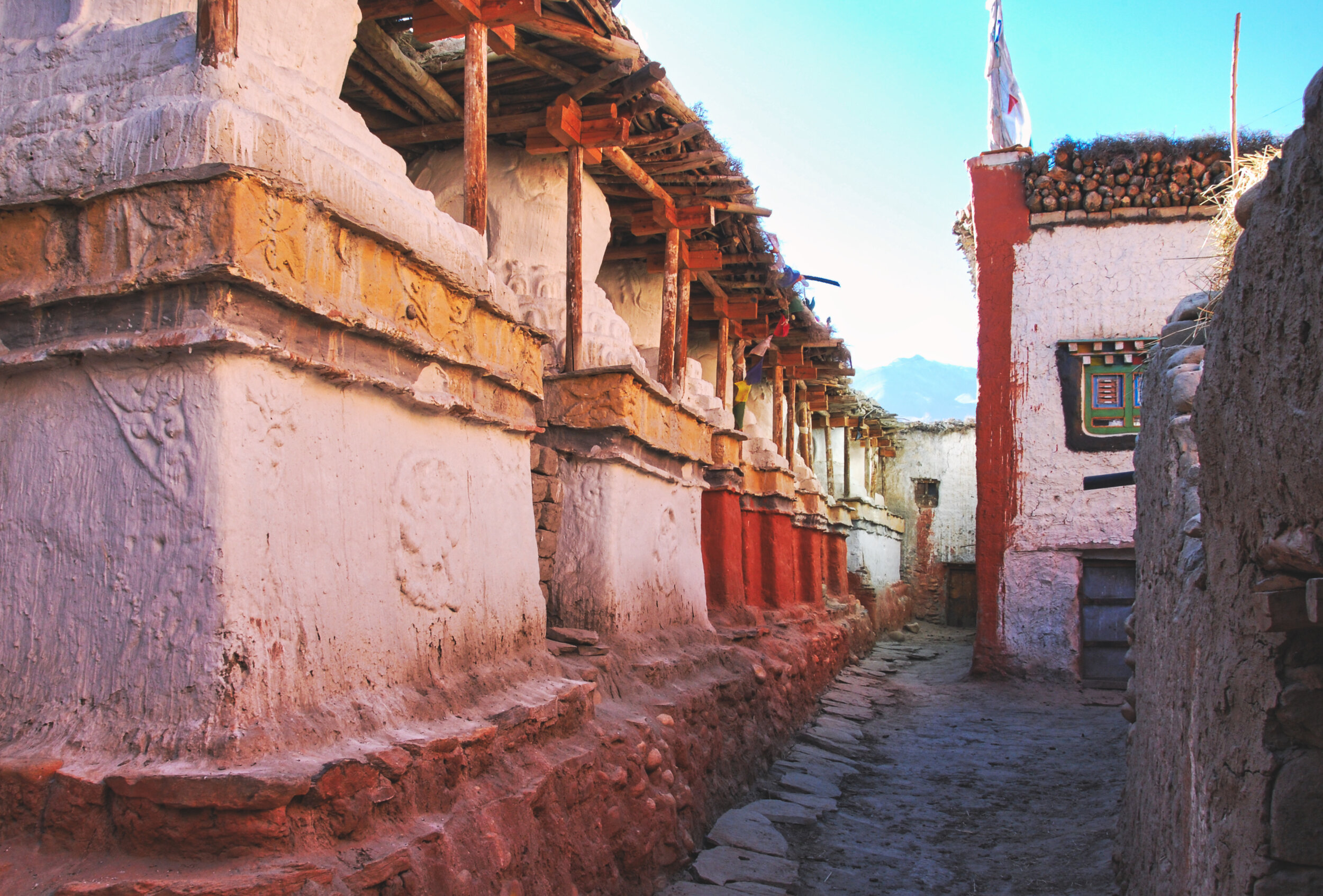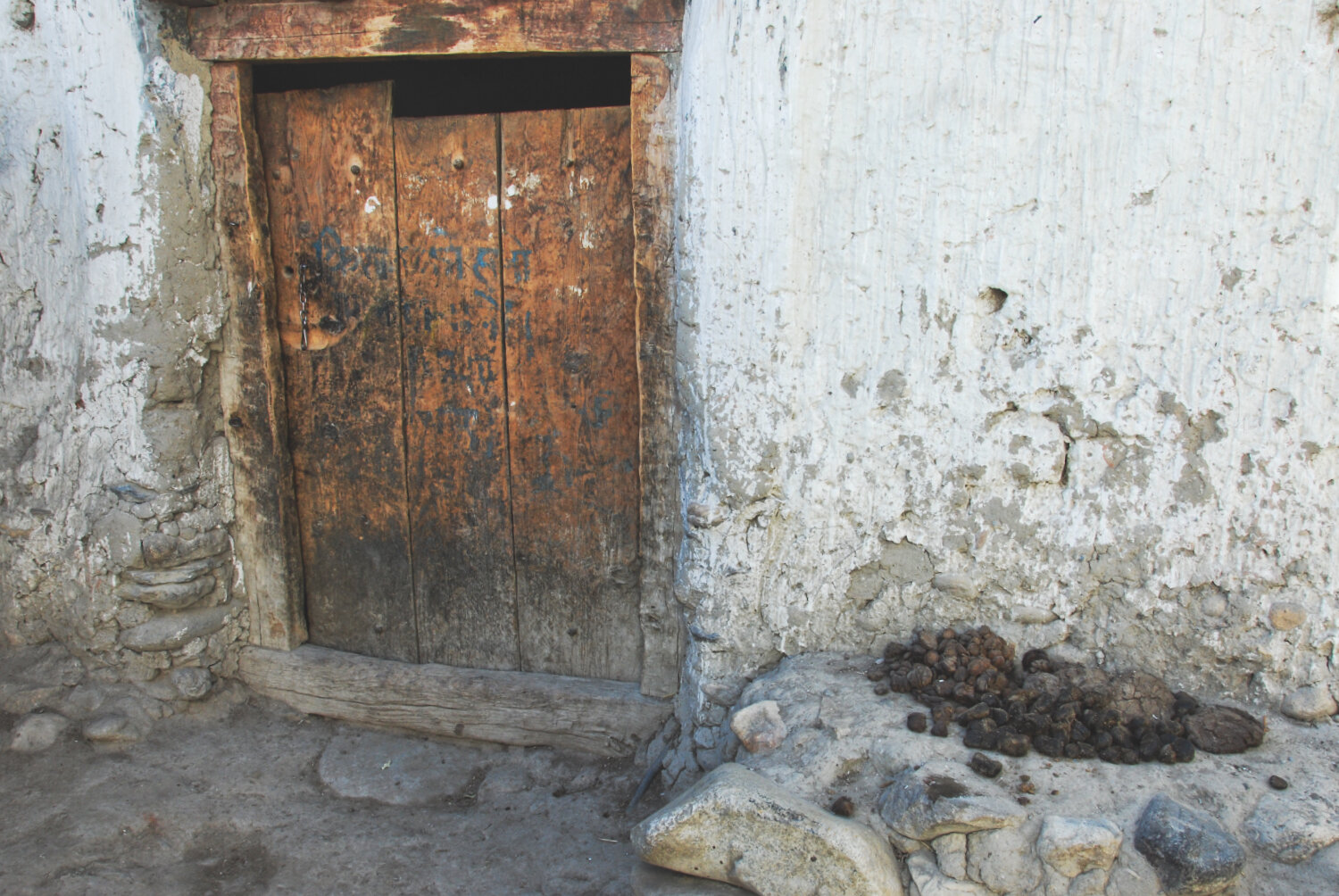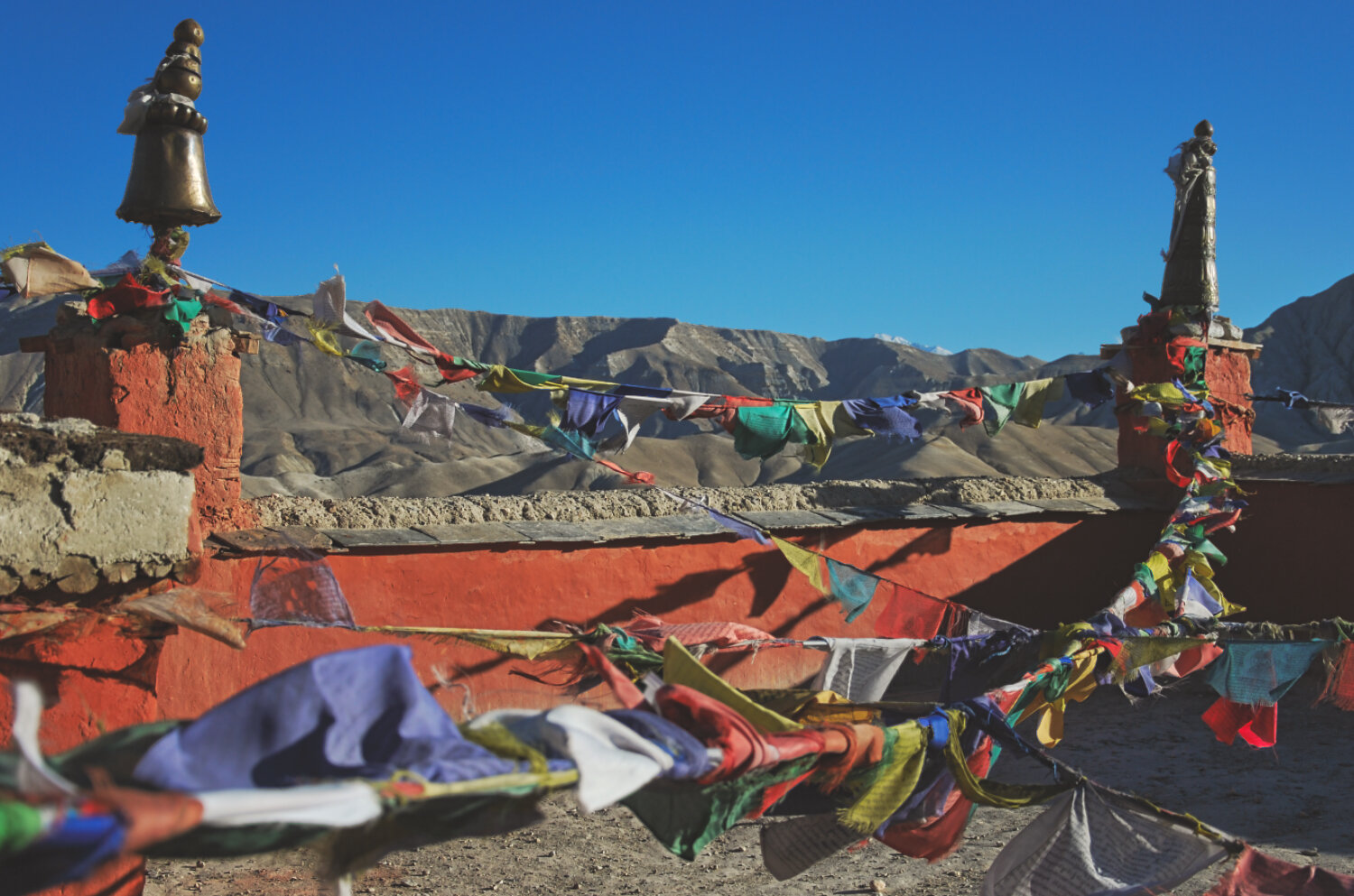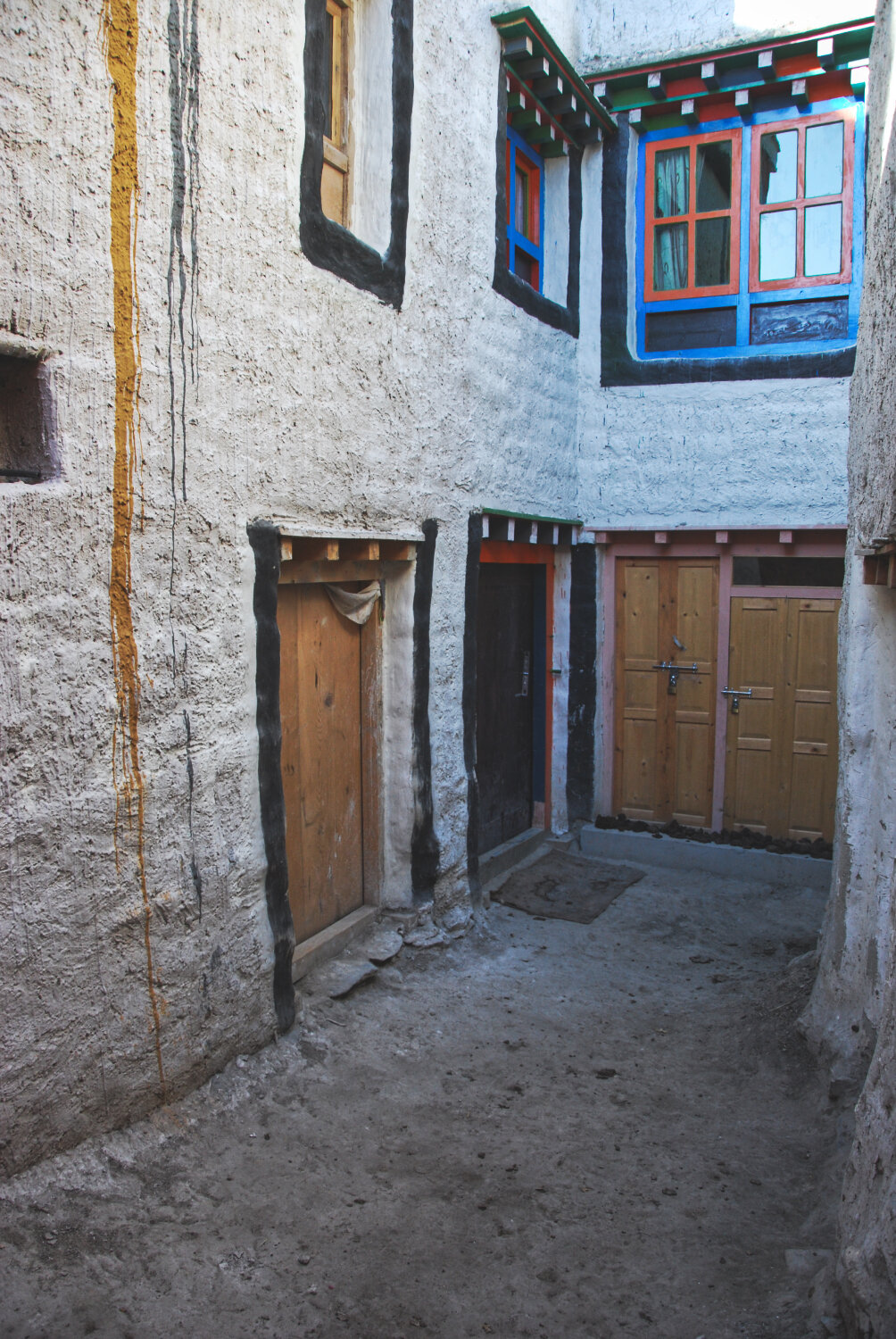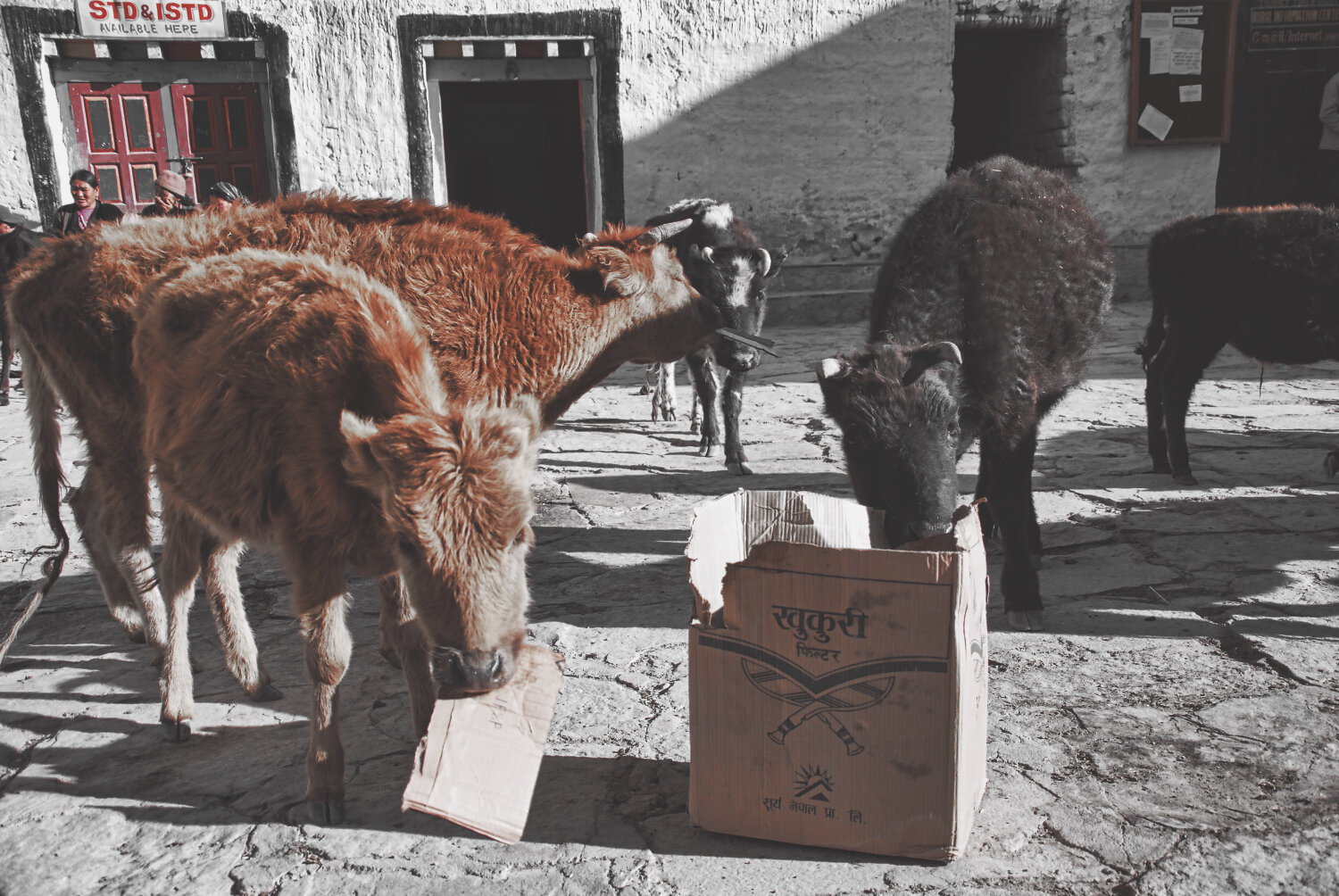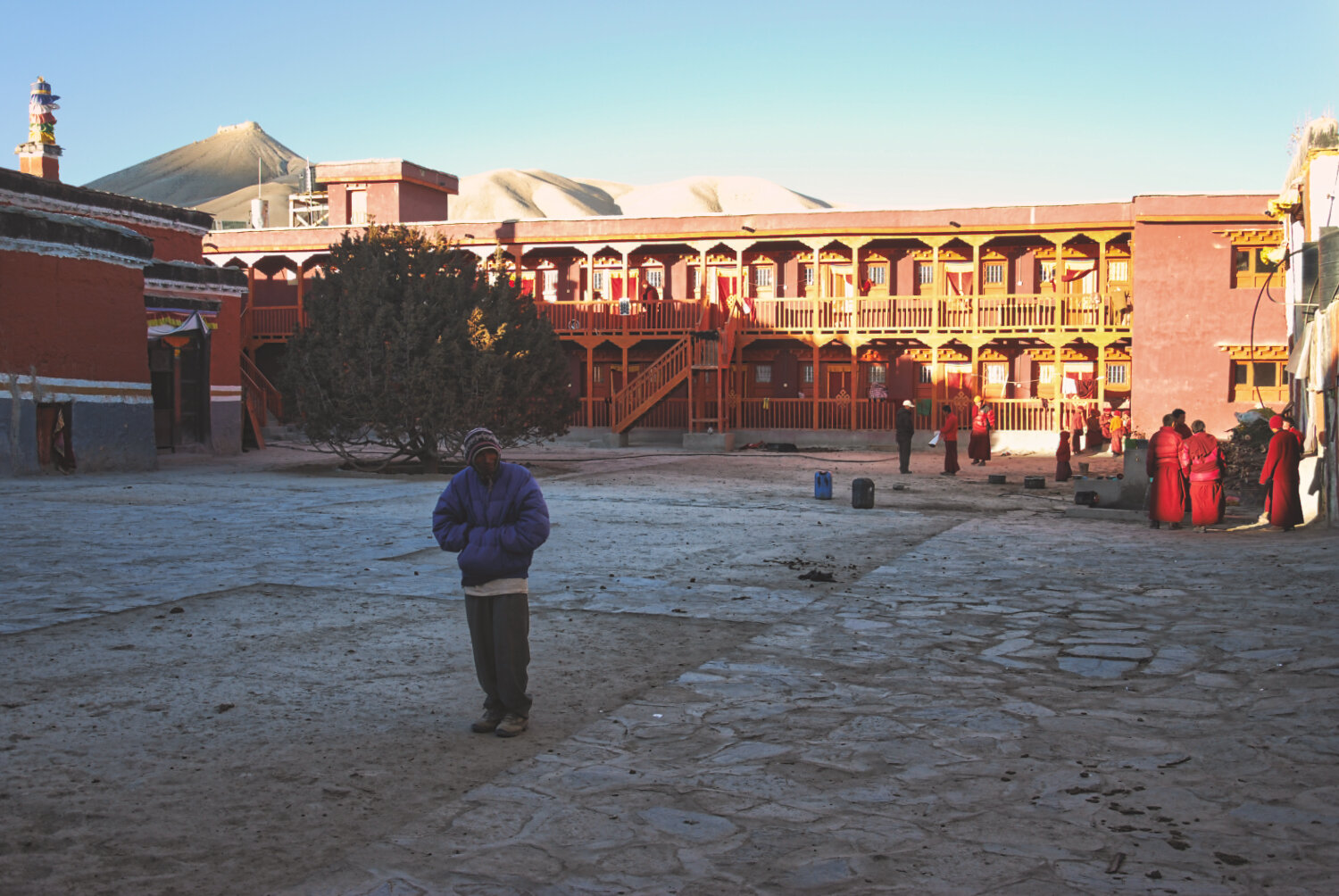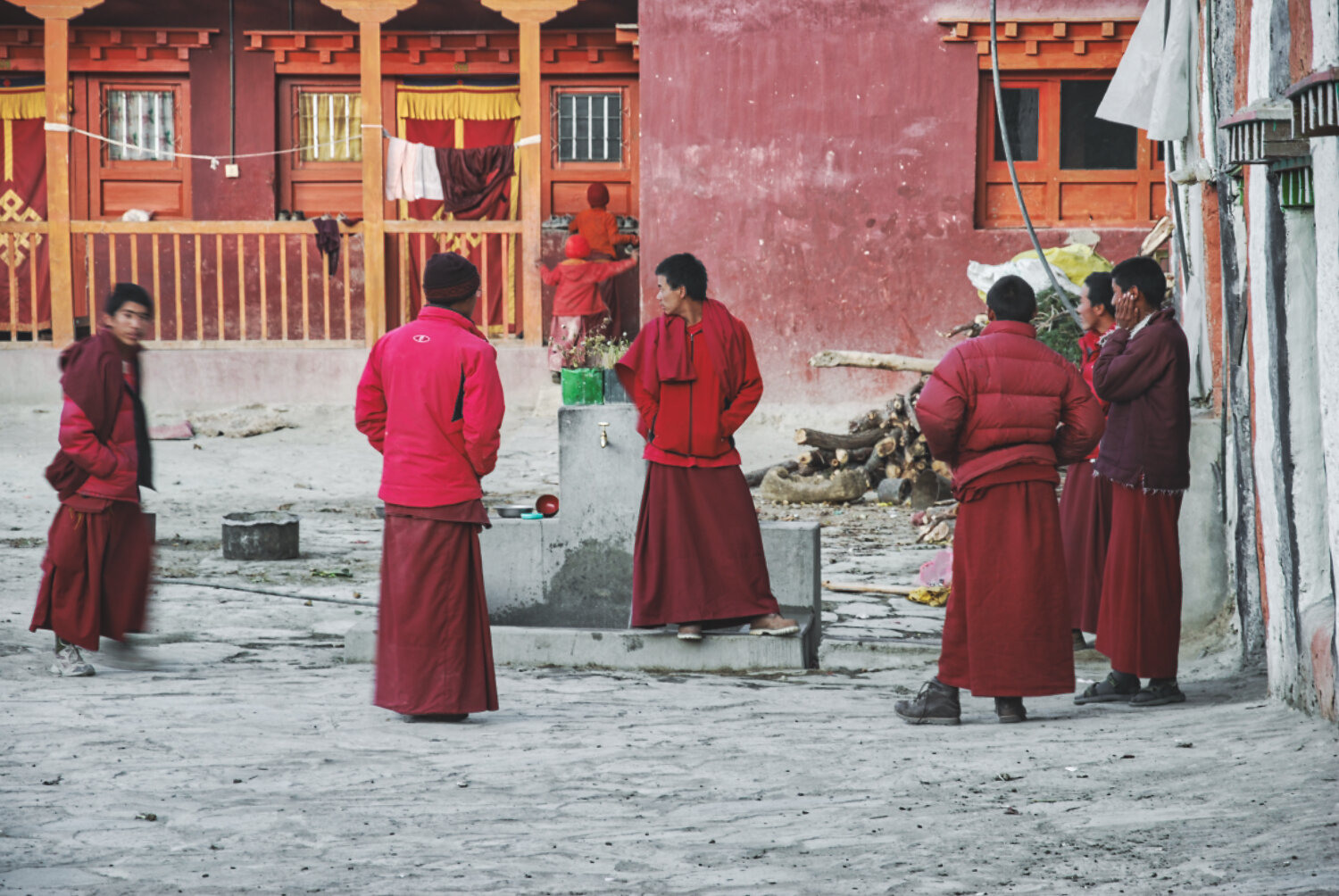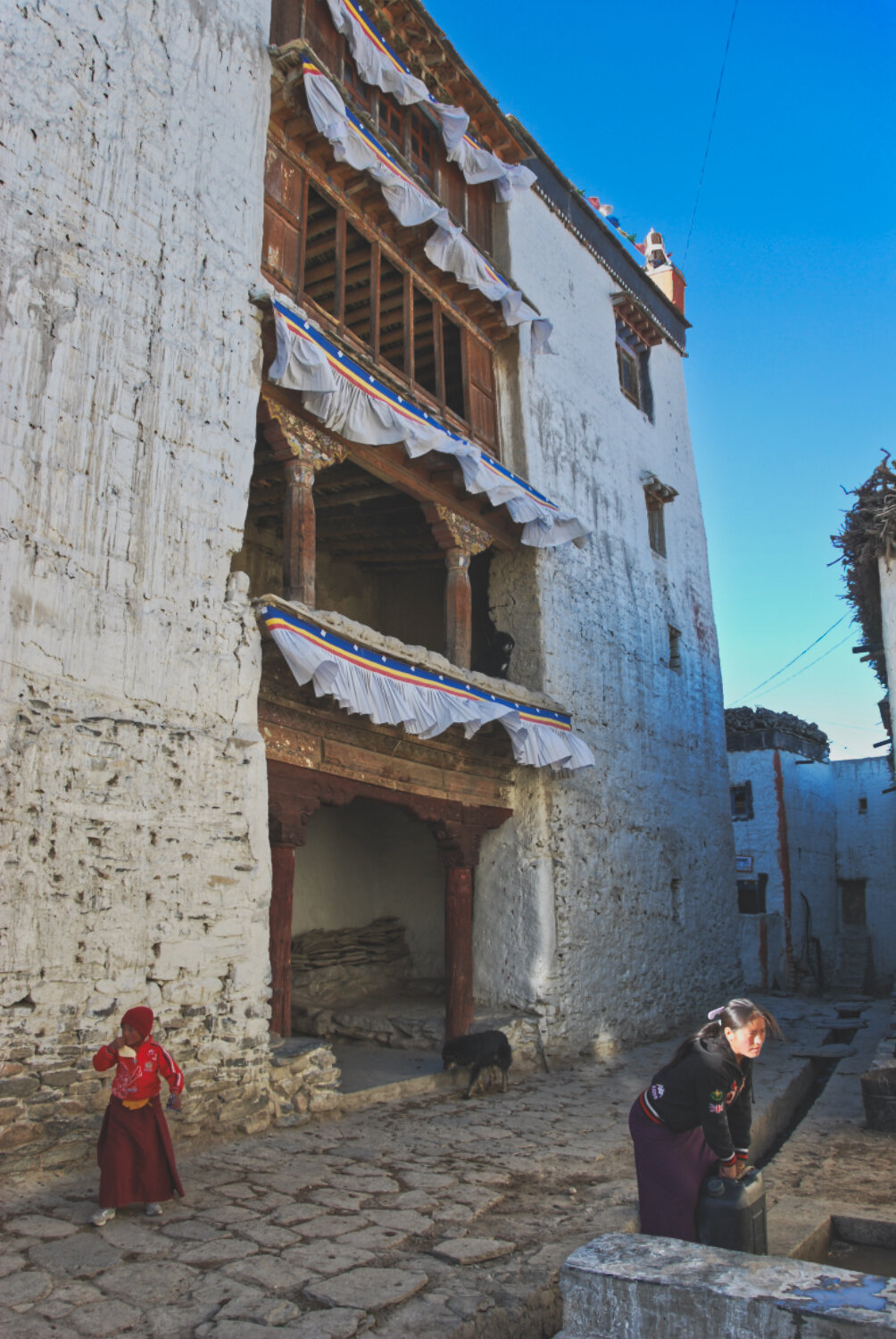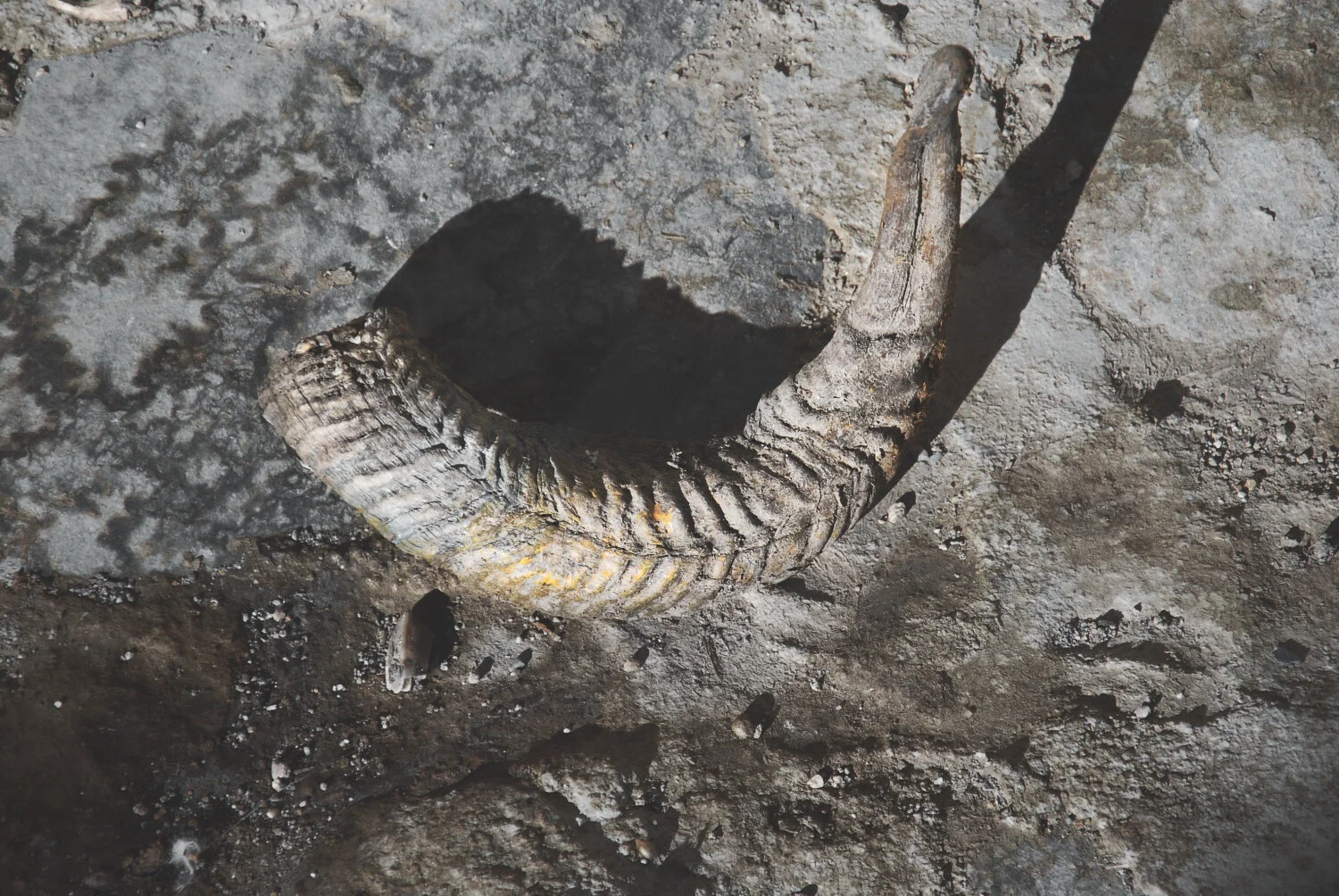93 - The King and Not I (Lo Manthang, Nepal)
*ALONE WITH MY THOUGHTS WAS I. A blessing or a curse depending on how well I get on with me. Short answer? Depends. While prancing around Upper Mustang’s share of the Tibetan Plateau? Me, myself, and I got along famously. There was much to discuss, much to absorb and render, much to reflect upon. And yet, I still can’t decide if an associate would’ve made this experience better or worse. We work with what we have, and maybe I’m rationalizing my penchant for seclusion.
*(Not quite. I had a guide no more than twenty minutes in my wake and sporadic local “traffic” breaking the solitary illusion, not to mention Hans and Grets and their guide rounding out the rear. The isolation was figurative in some sense, more of a social segregation in a foreign landscape.)
“One is the loneliest number that you'll ever do. Two can be as bad as one, it’s the loneliest number since the number one.” – Three Dog Night
Then again, maybe not. I believe this was optimal in that place at that time. Our lives are contextual in the extreme. What is good for the goose at one moment in one place may not be good for the gander at another place or time, or the same place and different time. Long intervals of self-reflection strolling atop Earth’s upper echelon was a soul-refreshing endeavor.
Being alone does not, by itself, make one lonely. Plenty of folks thrive during short or even longer bouts of social quarantine. It’s a good thing, a necessary thing for the vast majority. We crave it. We need it… but not too much. Just enough to recharge dilithium crystals and reconnect to the matrix. When you’re alone, savor it. Let it simmer. And then get back out there.
I’ve had issues with the “get back out there” part. Extended retreats into myself have been the rule, not the exception. Reasons go beyond the scope of this post, but I may get there before the end. Did I get lonely on the road? Sure, just as I did off the road. You can’t run away from yourself, only duck and cover from time to time.
Companions are good. We should have them. I left for Indonesia solo and remained so, more or less, for most of the sojourn. Until Mustang, I’d had travel chums a few days here, a week there with a romantic interlude thrown in for good measure. Maybe what I needed on the sun-drenched dusty Tibetan plateau wasn’t a companion, but the right companion. (If nothing else, a partner would’ve offset the organizational burden.) I wonder if we need witnesses along the way to validate life’s beauty, its overarching magnificence. Maybe we need a notary to consecrate our internal musings and jubilations in the face of natural incomprehensibility. Or should we hog a discrete portion for ourselves?
Globetrotters were everywhere (especially in Kathmandu), but the average vagabonder seemed more closed off than I recall from earlier travels, a trend I noticed from the start (i.e. my arrival in Bali eleven months prior). If I’m being honest, I didn’t go out of my way to engage, taking on the role of doppelgänger, mimicking the disposition of fellow rovers. If someone was friendly and outgoing, I reflected that and, likewise, if they were cold and introverted, I responded in kind.
We’re all victims of our own subjectivity. The “cold and introverted” sect predominates my recollection, but maybe I was projecting. Did the world change? Did I change? Both? Ah, another reason for confederates—validate or repudiate one’s neurosis. More than once, frigid demeanors melted with minimal prodding. Moral of the neurosis? Never be afraid to go first. Or better yet, always go first. Still, I sensed, but never quite appreciated, a growing trend toward introversion and a tribalistic dynamic. Lone wolves seemed lonelier.
I did make overtures with Ram (my guide) that met with limited success. Not exactly a chatty fella, and I got the feeling he just wasn’t that into me (by “me” I refer to the trip in general). The trekking outfit brought him in last minute to assuage Hans and Grets, a contingency he neither anticipated nor wanted. That being said, I had no complaints as he was attentive and responsive if not laconic outside his sphere of duty. I attribute this more to limited English skills than motivational deficiency. He was friendly enough considering my boundless enthusiasm and ridiculous appetite.
Hiking at altitude can be a tricky business. Too fast, you risk premature exhaustion. Too slow, you risk ennui and mental lethargy. I had my cruising speed. Ram had his. At times, it was advisable to simmer down, but autopilot took control most of the way. After a few acclimatization days, I was feeling good—real good—like a drug addict on the razor edge between ecstasy and overdose. I felt like skipping up the nearest peak and screaming, “Fuck yeah!” at the universe, or with the universe. The force or presence or whatever the fuck pulsated through my veins fostered a near psychedelic state I couldn’t comprehend, let alone restrain. For brief moments, I was a part of everything and everything was a part of me. No more ‘I’. No more ‘me’. Just ‘it’… and then it was gone, poof.
Digress much? On the sixth day, we entered the walled capital of Lo Manthang. Despite the appearance of poverty and squalor, the capital is relatively prosperous, or so I read. (Emphasis on “relatively.”) During its heyday on the Tibetan trade route connected to the Silk Road, all the salt and wool transported down the Kali Gandaki River made its way through. Nowadays, land and livestock ownership determine a person’s economic status, not commodities exchange. As elsewhere, the houses in Lo Manthang are the usual two-story dwellings equipped with balconies overlooking dusty courtyards. The ground floor is for livestock and storage. You’ll find a ladder or notched log leading to the roof, an area ideal for stacking firewood and juniper, drying clothes and animal skins, and for some good ole fashioned sun-bathing. The firewood adorning the rooftops is seldom utilized, more of an ostentatious display of wealth or prepper-type scenario.
Firewood was in short supply (locals could walk for days to find some), so the fuel of choice is shit. Any pooh will do, and one encounters caca from cows, sheep, horses, and yaks drying in the sun. Even sapiens shit makes the cut, mixed with stove ashes and used for fertilizer.
The raja (king) had, like many locals, migrated south for warmer weather as was customary during winter months. This was a pity as tourists were often invited into the palace for pleasant conversation and yak butter tea. I was informed I’d have to settle for meeting the prince, a state of affairs beneath my noble pedigree.
Mustang’s culture is quintessentially Tibetan. Although never technically part of Tibet, its influence is extensive. Ame Pal established the kingdom (known as “Lo”) in the 14th century. The last king, Jigme Palbar Bista (1930-2016), traced his ancestry back twenty-five generations to Mr. Pal. The Kingdom of Nepal annexed the region for the lucrative trade route near the close of the 18th century, but let it remain autonomous. Lo retained its independent status until 1951 when Nepal's King Tribhuvan re-established rule in response to China’s Tibet invasion. The raja was appointed honorary colonel in Nepal’s army. The monarchy is no more, having dissolved along with its Nepalese counterpart per Maoist revolution. And though the king and queen were well respected (often consulted on matters of village life), their roles were ceremonial. Jigme’s death in 2016 made it official.
When one conjures palaces, grandiose images abound. Versailles. The Alhambra. Potala Palace in Lhasa. The royal residence is a much more modest affair. Nevertheless, I never miss a chance to sip tea with royalty and wander the sacred halls of an ancient palace. More disappointment. The prince was off in the hills tending his horses or doing something with yaks (more translation snafus). I found this insufferable, a direct slap to my distinguished and well-bred visage.
The palace was vacant, occupied only by the enormous mastiffs placed there as sentries. These monsters have a special place in Tibetan society, serving as a first-line defense against wolves, thieves, yetis, the Chinese, etc. The rambunctious pups are chained during the day and set loose to wander their areas of dominance at night. They can be vicious bastards, their maniacal barking a pants-shitting catalyst.
My first meal in Lo Manthang turned into a high-drama vignette. The regular cook retreated with the other seasonal migrants, so it was up to the remaining family members to satisfy my culinary whims. Mushroom spaghetti. That was the challenge de jour. From the dining area, I heard unsteady voices (staff, guides, angels, demons) in a tense high-level discussion with “mushroom” interspersed every so often. You’d think they were in the kitchen trying to enrich uranium. I couldn’t care less about what I ate. (What’s this, baked goat shit on a bed of rice? Excellent.) I made my indifference known but was assured it was no problem. The inaugural “Convention On Mushroom Spaghetti Preparation” was an overwhelming success. Delicious!
In the afternoon, I visited two of the four ancient gompas within the city walls, Champa Lhakhang and Thubchen Gompa, dating from the 15th century AD. Both are fascinating monasteries filled with Buddhist iconography from the Sakya tradition. Statues, frescoes, carved pillars, and a myriad of Buddhist religious paraphernalia garnish the interiors. Pictures weren’t allowed inside (a precaution against collectors of stolen art) and explanations were rudimentary. One need not know a thing to find statues depicting various incarnations of the Buddha compelling. If I didn’t know better (which I didn’t), I’d have guessed they were Hindu in origin. Religions don’t form in a vacuum. They’re constructed over time, layered on older traditions and customs. These artifacts bore testament to the amalgamation of ancient Buddhist beliefs with older animistic ones likely dating back to the even more ancient Bon religion.


